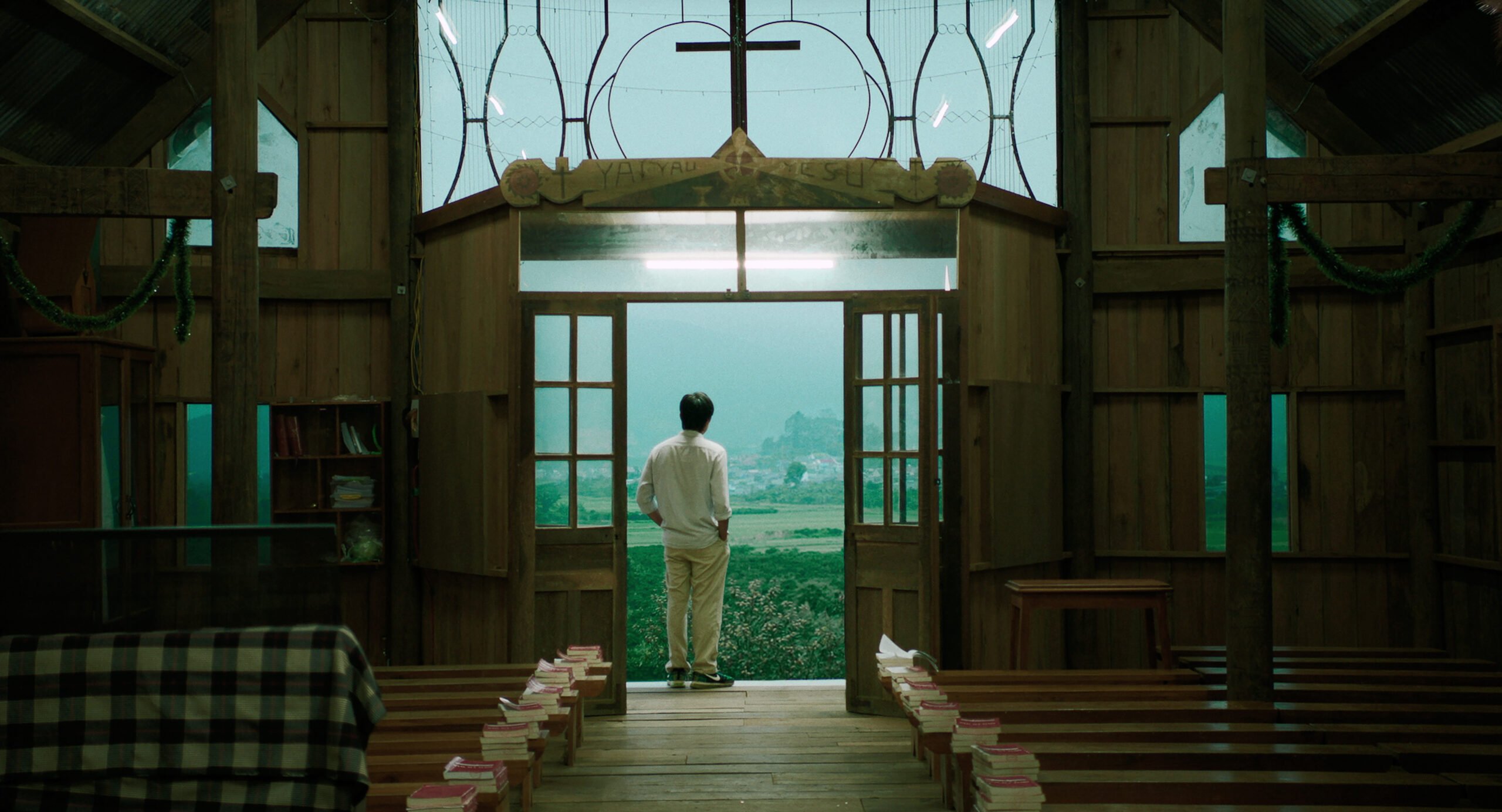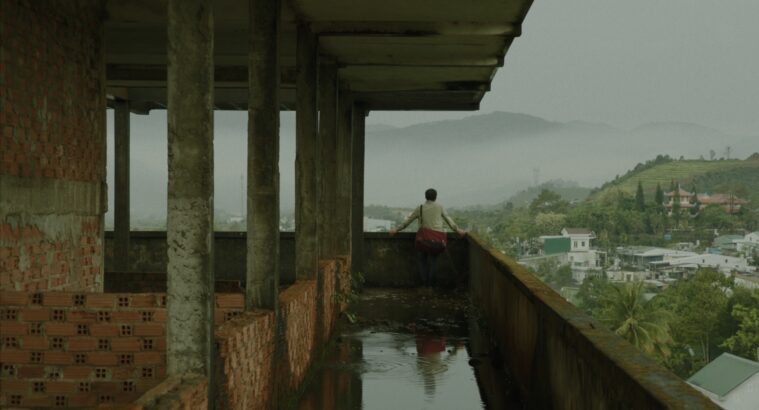
Phạm Thiên Ân: From ‘Yellow Cocoon’ to Cannes
A Vietnamese filmmaker with Houston ties reveals more about his contemplative, award-winning film.
A version of this story ran in the November / December 2023 issue.
Above: A still from Inside the Yellow Cocoon Shell by Phạm Thiên Ân, which recently won the Caméra d’Or award at Cannes Film Festival.
In 1993, the Caméra d’Or award, reserved by Cannes Film Festival for the best directorial debut, went to a filmmaker of Vietnamese descent—Trần Anh Hùng for The Scent of Green Papaya (Mùi đu đủ xanh). In May, 30 years later, it happened again: The winner was Phạm Thiên Ân of Inside the Yellow Cocoon Shell (Bên Trong Vỏ Kén Vàng).
Interestingly, both film titles refer to an item that’s organic in nature and suggest one must get close to fully experience it.
Ân, whose base often cycles between Saigon and Houston, where he has family, became an instant celebrity in Vietnamese media and cinephilic circles after his Cannes win. But he’s been around cameras a while, mostly filming shorts and weddings (“I still do this,” he says). Inside the Yellow Cocoon Shell is his first feature-length film.
An expansion of the 14-minute short called Stay Awake, Be Ready, the film follows Thiện (Lê Phong Vũ), a man who must travel to the misty and verdant highlands of Lâm Đồng Province to return his sister-in-law’s ashes. In the process, he relives memories and contemplates existence. (Another Cannes connection: The film’s short version received the Illy Award for Best Short Film in 2019.)
The Texas Observer spoke with Ân as the film debuted in Vietnamese cinemas. It’s expected in U.S. theaters soon: The classic and art house film distributor Kino Lorber has bought the North American rights to Ân’s film, the Hollywood Reporter revealed in July.
What were your joys and concerns upon learning your film possessed traits that both Vietnamese and international reviewers would consider rare, given its three-hour runtime?
The first cut of the film was around 3 hours and 40 minutes. After I sent it to my producers, I went out to the park. I felt anxious. I knew I had to wait for around a week or so for a response. It really felt like I was sending my own child away! Then the feedback came, and I was glad when people said the film was really engaging. In this first cut, I actually felt the story flowed better—for the version in theaters, I had to trim the long takes, for some I had to halve them!
Moreover, my producers advised that a lengthy film might face problems with distributors or even festivals. If a festival gets two great submissions, one running 3 hours and the other 1 hour and 30 minutes, of course, they’d prioritize the latter. But if they’ve picked the former, it means they love it, not just like it. This would force me to really think about every cut. And so, every cut would come with a prayer, a hope that I was right.

Were you surprised when they called your name at Cannes?
I told [producer Jeremy Chua] that I wanted to attend the ceremony only to see how famous filmmakers accept their awards. … I thought that I may have, at most, a Special Mention, but who could have guessed that I’d get the Caméra d’Or! Of course, I was ecstatic. Then, everything came—left and right I was pulled to meet the press and be interviewed.
Speaking of the press, many suggest that Inside the Yellow Cocoon Shell is inspired by [fellow filmmakers] Theo Angelopoulos, Béla Tarr, Andrei Tarkovsky, or Tsai Ming-liang…
People have also named Apichatpong [Weerasethakul the Thai film director]. And it’s true—I’ve watched many movies and researched many directorial styles. I’m attracted to slow cinema, and the names you mentioned are all representatives of it, so of course they serve as influences. But despite being a younger-generation practitioner following the masters’ footsteps, I’d still try to add a personal touch. I take what I’ve learned from Tarkovsky or Angelopoulos, then localize it.
And you have. None of them have made slow cinema featuring the scenery of Lam Dong Province.
[laughs]
“In all the films I’ve seen, whenever the weather changes, the people change.”
Nature predominates in Inside the Yellow Cocoon Shell. Did you use nature to represent the emotions of the characters, perhaps even to express things on their behalf?
That’s the right thought to have. Tarkovsky once said “Cinema uses the materials given by nature itself,” and so in my film, I focus on elements about the weather, climate, people, animals, and related things. I feel that a film must have these because they are essential to life, because they are life. And so, they can influence human beings: In all the films I’ve seen, whenever the weather changes, the people change. The most precise of filmmakers would focus on the weather to make their characters feel a certain way, and from there allow viewers to go deeper into the story.
I feel certain that the lead character Thien is your avatar, then.
Right. During casting, I’d search for a guy around my age, around 32. I build the character based on my feelings, my worldviews—after all, my film is about the contrasts in life, energy, and culture between Lam Dong, where I was born and raised, and Saigon, where I’m working. My character also has to move from one place to another. And I’ve had my own experiences with church, nuns, massage, and a far-off place where memories would rush back, which became characterization material.
Going deeper, I feel that Thien is having a crisis of faith, albeit of the private and quiet kind. If I may ask, did you go through one yourself? Or are you going through one?
My making of this film goes hand-in-hand with the expansion of my faith. At the start, I was filled with vagueness and uncertainty in my actions—but by the end, and with luck that I could read the signs from above, I felt that my faith became stronger and stronger. Only my character has a crisis of faith. Through the film, I realized that my faith has grown. I have grown.
What can we expect from your next work?
I’ll retain my style and spend even more time on Vietnam, the Vietnamese people, and all that surrounds them—their faith, each other, and nature.




